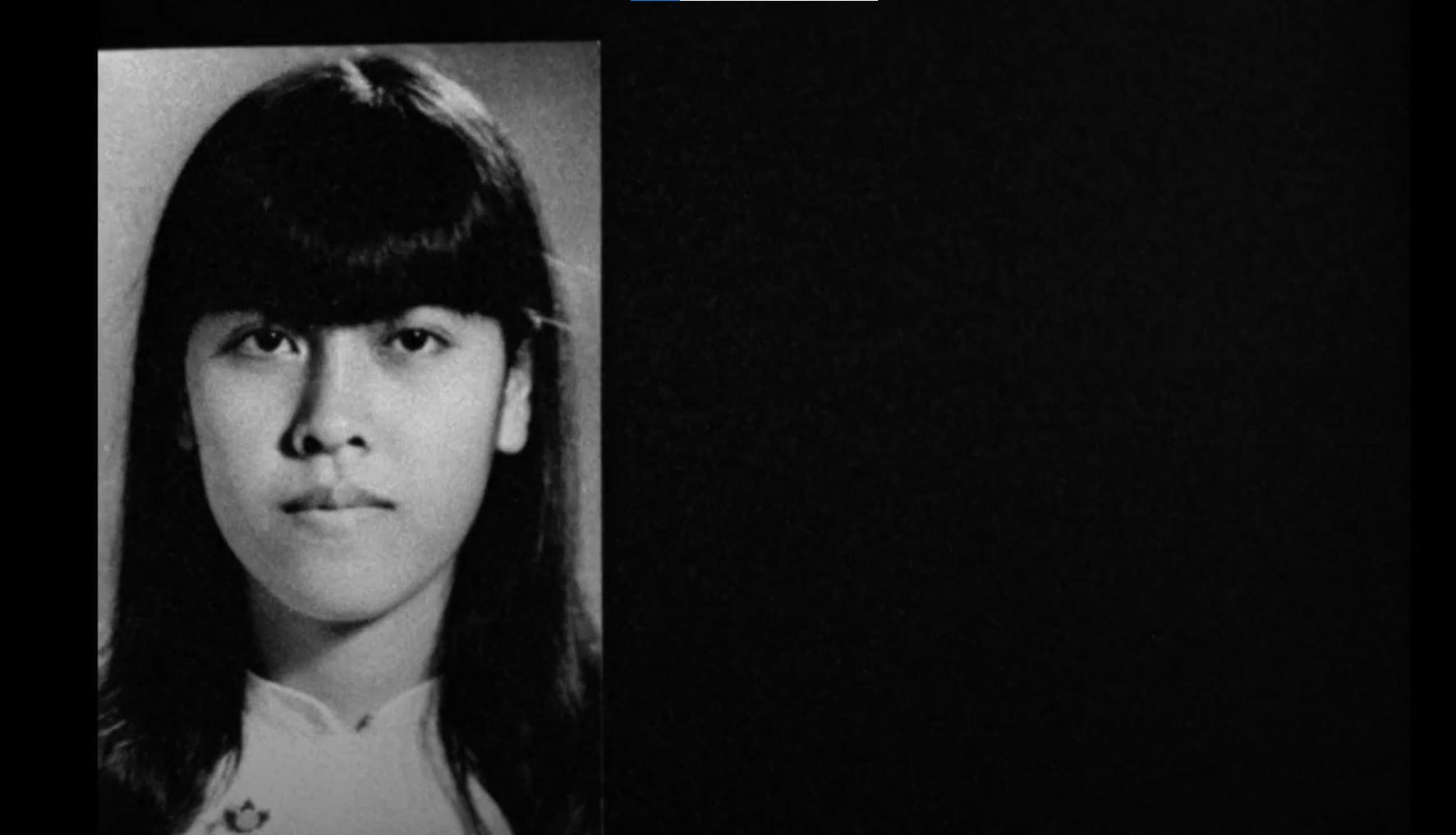by Elspeth Vischer
Timestamp for the scene discussed: 00:59:06 – 01:05:50
How to make a documentary that dispels the relevance of the term ‘documentary’? This is a question that seems to pulse through Trinh T. Minh-Ha’s work, most notably in her seminal film Surname Viet Given Name Nam (1989). This film is fragmentary, it is autobiography, it is ethnography, it is exploratory. It can be considered all of these things and yet no single definition fits comfortably.
Along lines of discomfiture scenes within Surname Viet dissect themselves. We, as the audience, are witness to a layered performance. Women are composed, neatly dressed and carefully positioned. Women unerringly recite scripted words as if performing a verse from The Tale of Kieu, an epic poem that the film references as being a synecdoche for the suffering of Vietnam as a country.
Text appears on screen to spell out scripted rhetoric. We read as we hear the performance. The rhythm of recitation never matches our own reading and so we feel permanently at odds with the information. Off-kilter, we plunder through experiences of women in Vietnam and try to relate but are forced only to reconstruct.
Just under one hour into Surname Viet Given Name Nam, we arrive at a discourse on the street sweepers working in Vietnam and how they are manipulated by politicians. It is at this moment, over half-way through the film, that an omniscient voice interrupts the woman on screen:
‘I am caught between two worlds.’
This secondary, omniscient voice agrees and implores:
‘I would have to affirm this uncertainty. Is a translated interview a written or a spoken object?’

The subsequent five minutes of screen time volley back and forth between speaker as present on-screen and filmmaker as questioning decisions in another temporality. Another female fragment, a woman seen from behind, hands clasped almost in prayer, describes ‘a feminine spirit’ as ‘eager to please’. Is this an ironic hint at the ulterior motives of Trinh’s within Surname Viet? It explores and interrogates traditions and notions of gender whilst also seeking to confirm their redundancy. What is the purpose of these women, pacing against white walls as if imprisoned within the frame?
‘Truth is not always found in what is visible.’
Our guiding voice brings us out of each image and unsettles the pace of what has hitherto been presented as a series of testimonies. We are now interrogating each image and mistruth. We are questioning the purpose of these constructed oral histories and what they tell us about women’s lives in Vietnam. In this sequence, Trinh’s words become as accusatory as a despotic producer, symbolic of the patriarchal film industry. The form of the interview is dismantled as antiquated and redundant.
‘Speech is always tactical’
A third voice is now heard, conducting a mini-interview with the director on what criteria she selects people to be interviewed for this film. We later find out this third voice belongs to that of an American friend and fellow student of Trinh’s. The visual accompaniment to this is a woman outside somewhere green, freed from the previous artificial interiors. This woman moves her hands up and down on screen and focuses her gaze directly down the lens of the camera. She focuses our attention on the choices being made and why Trinh is interrogating them.

What follows is a montage of family photos. Photos of a young Trinh T. Minh-ha. A visual autobiography coming full circle. As Trinh describes: ‘The pose is always present’. A blunt-fringed young girl connects all the other female fragments. A smiling family belies a deeper truth. A letter is read out describing the pleasures of going to an ice cream parlour in Vietnam and this ritual being recreated in Texas by Vietnamese communities. There is an inwardness to the words here that extract meaning, just as photos of the family appear as extracts and composites.
‘The pose is always present. And accidents on film are known as controlled accidents’.

This scene becomes a further developed argument against such control on screen. As Trinh seems to conclude here, in trying to dismantle the structures of the documentary interview:
‘I find myself closer to fiction.’
Arriving at this assessment as a classroom appears on screen, the viewer once more joins in being caught between the two worlds. That of the filmic image, and the self-reflexive analysis. In being seemingly ‘closer to fiction’ Trinh T. Minh-ha’s work becomes its own poetry and we read closely, with our own interruptive thoughts on every choice seen and heard.
‘Surname Viet Given Name Nam’ is available to stream on dafilms


One thought on “Caught Between Two Worlds—A Scene Analysis of ‘Surname Viet Given Name Nam’ (Trinh T. Minh-Ha, 1989)”